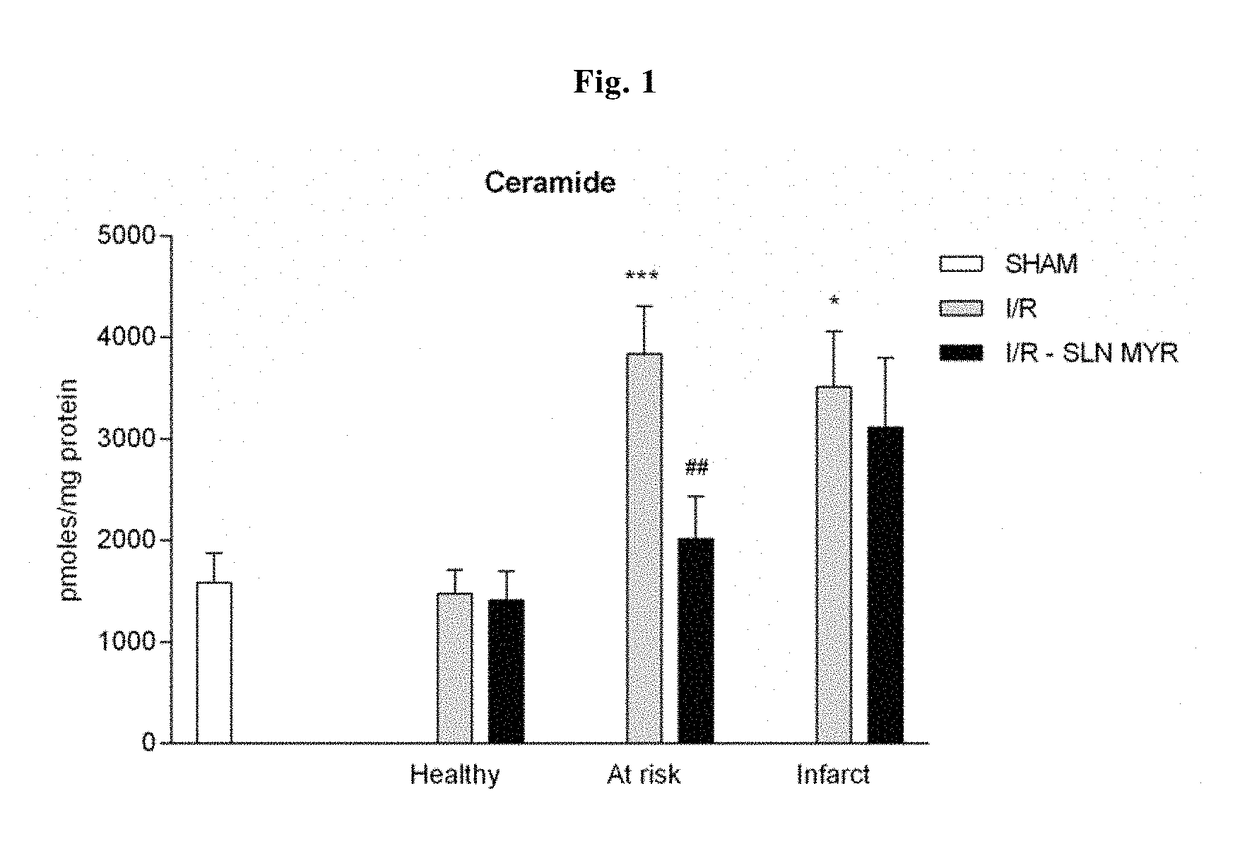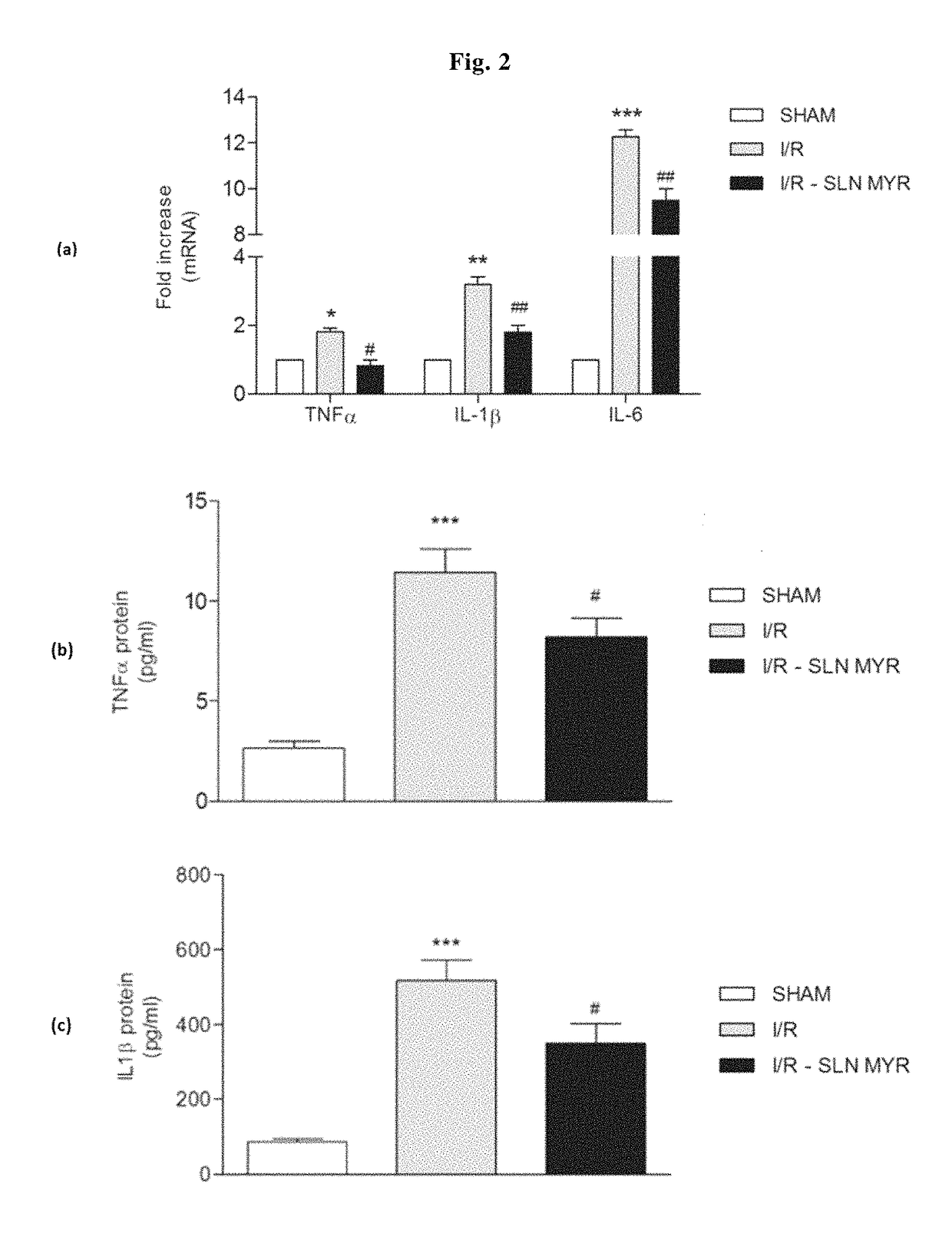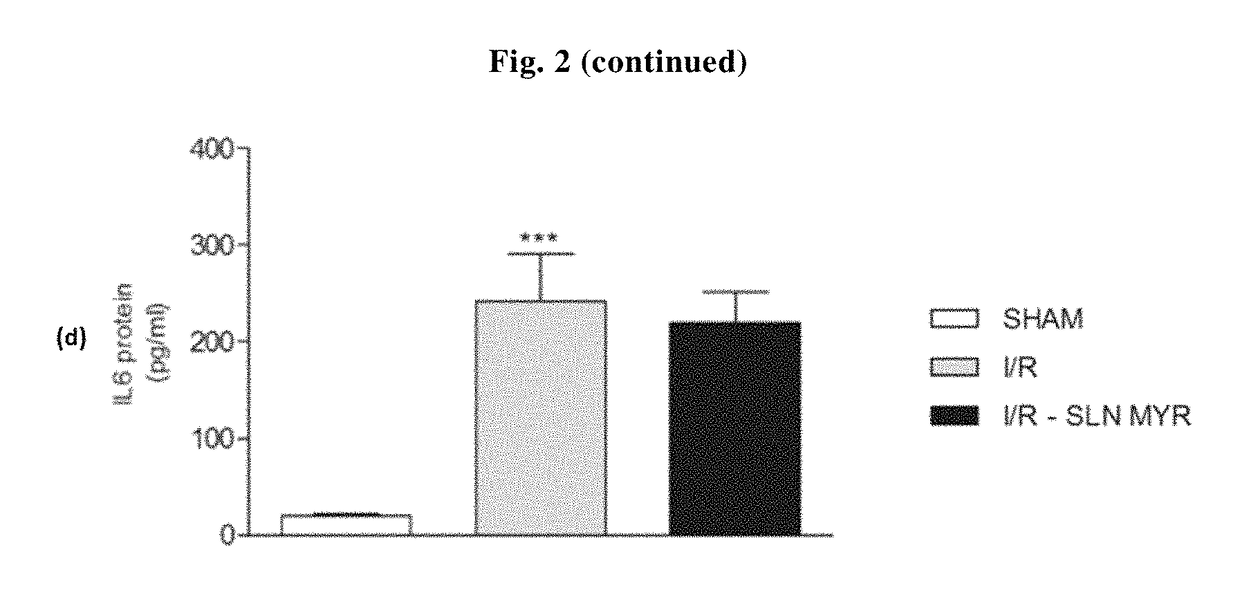Methods for treating cardiac reperfusion injury
- Summary
- Abstract
- Description
- Claims
- Application Information
AI Technical Summary
Benefits of technology
Problems solved by technology
Method used
Image
Examples
example 1
y Induces De Novo Synthesis of Ceramide in the Area at Risk
[0078]To evaluate variations in myocardial ceramide content during reperfusion injury, we used a murine model of I / R obtained by 20 min LAD coronary ligature occlusion followed by 3 h reperfusion. For this analytic determination, we kept distinct the infarcted area from the area at risk and from the remaining healthy area. The procedure allowed obtaining an area at risk corresponding to 52.1% of the whole heart; from this area at risk, a portion corresponding to 38.9% is the infarct area. We quantified total ceramides in heart homogenates of the three dissected areas, infarcted at risk and healthy, by LCMS (FIG. 1). An approximately 2.4-fold increase in ceramide was found both in the infarct area and in the area at risk, relative to the basal levels measured in the healthy portions of the same samples (3512.5±545.8 pmol ceramides / mg of proteins in infarct; 3838.1±468.4 pmol ceramides / mg of proteins in at-risk areas; versus 1...
example 2
Synthesis Inhibition Reduces Infarct Size
[0079]To investigate the potential of inhibiting ceramide synthesis as a strategy to reduce I / R injury, we measured the average infarct areas and the surrounding areas after SLN-myriocin intraventricular treatment at reperfusion. We observed a significant decrease of the infarct size (calculated as percentage of the area at risk), dropping from 38.9%±1.5 in the I / R group to 23.6%±1.1 in the I / R group treated with SLN-myriocin, whereas no significant change was observed in the size of the area at risk, as expected for a consistent LAD ligation procedure (reproducible ischemia dimensions after LAD occlusion across the different groups) (FIG. 6). Both in the I / R and sham, the administration of empty SLN did not affect the infarct size (FIG. 3b).
[0080]Following the introduction of the ischemic postconditioning paradigm [39], a number of preclinical studies implementing the same approach have reported reductions of the infarct size falling between...
example 3
Synthesis Inhibition Attenuates the Inflammatory Response in the Area at Risk
[0081]To investigate the role of ceramide in inflammation-induced injury upon I / R, first we determined in the area at risk the mRNA levels for three cytokines primarily involved in the acute inflammatory response: TNF-α, IL1-β and IL-6 [48]). We observed a fold increase of 1.8, 3.2 and 12.3 for TNF-α, IL1-β and IL-6, respectively, in I / R compared to sham. To be noted, higher cytokine expression mirrored the increase of SPTLC1 and SPTLC2 transcripts and the rise of ceramide levels of example 1. SLN-myriocin administration upon reperfusion diminished cytokine production in the area at risk, compared to the untreated I / R group, with a fold decrease of 2.2, 1.7 and 1.3 for TNF-α, IL1-β and IL-6, respectively (FIG. 2a). The same cytokines were also directly assayed as proteins in the homogenates from the area at risk. As expected from their mRNAs, an increase of these proteins was observed in the I / R versus sham...
PUM
| Property | Measurement | Unit |
|---|---|---|
| Size | aaaaa | aaaaa |
Abstract
Description
Claims
Application Information
 Login to View More
Login to View More - R&D
- Intellectual Property
- Life Sciences
- Materials
- Tech Scout
- Unparalleled Data Quality
- Higher Quality Content
- 60% Fewer Hallucinations
Browse by: Latest US Patents, China's latest patents, Technical Efficacy Thesaurus, Application Domain, Technology Topic, Popular Technical Reports.
© 2025 PatSnap. All rights reserved.Legal|Privacy policy|Modern Slavery Act Transparency Statement|Sitemap|About US| Contact US: help@patsnap.com



